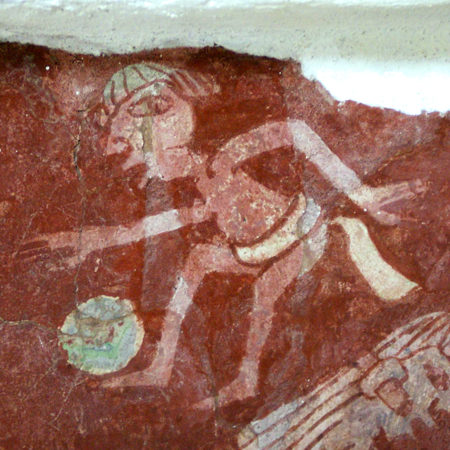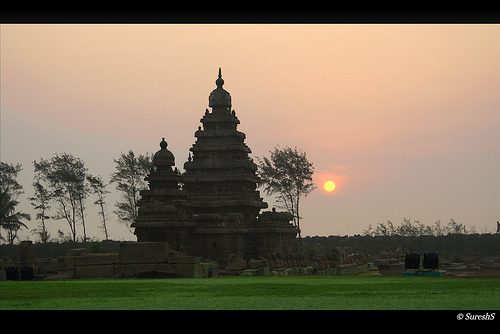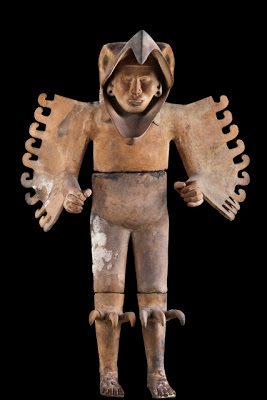Key Dates Tikal was at its height between 200 and 900 AD Tikal Guatemala Tikal, in the jungles of Guatemala is one of the largest archaeological sites and urban centres of the pre-columbian Mayan civilization and was at its height between 200 and 900 AD. The park contains 222 square miles of jungle, and the residential area of Tikal itself covers 23 square miles encompassing 1000s of structures of which very few have been excavated. The University of Pennsylvania took 13 years to uncover 10 square miles of architectural remains, so there are most likely a number of structures in…
-
-
It might have taken Europeans until the 19th century to make rubber, but Mesoamericans were playing with bouncy balls back in 1,600 BC. And not only were pre-Columbians the world’s first polymer scientists, but new research suggests they fine-tuned their discovery for different uses. According to Professor Dorothy Hosler and Michael Tarkanian of the Massachusetts Institute of Technology (MIT) cultures like the Mexica, Olmec and Maya perfected a chemical processing system to create rubber with varying qualities. Bouncy rubber was used for rubber balls, used during the legendary Mesoamerican ball-game (see more ancient sports), while axe-heads were fastened with a…
-
Attribution: Wikimedia Commons Key Dates The museum was founded in 1823. Bogotá Colombia The Colombian National Museum is the largest in Colombia, and is located in a huge building complex in the capital city Bogotá. he building itself was constructed in 1823, and was based on the Panopticon, an Orwellian prison devised by 18th century British social philosopher Jeremy Bentham (whose ‘mummy’ now resides in London’s UCL). The museum’s collections number over 20,000 pieces spanning thousands of years of Colombian and pre-Colombian history, from 10,000 BC to the 20th century. 2,500 items are on display at the museum, whose departments…
-
It’s the kind of myth that has always had the power to fascinate people: a beautiful, wealthy and sophisticated ancient city is swallowed up by forces beyond man’s control, destroyed by the sea and earthquakes. There are examples around the world of these mythical submerged cities. We not only have Atlantis somewhere in the Atlantic Ocean, but in Taiwan there’s the legend of the submerged Mudalu, in Wales there is a drowned city called Cantre’r Gwaelod and a similar story tells the tale of Ys, a drowned city off the coast of Brittany in France. They are all myths that…
-
Scholars often refer to cultures who used monumental architecture for political purposes as a ‘theater-state’ and boy could the Aztecs put on a good show! When the Spanish conquistadors first glimpsed Tenochtitlan at its zenith in 1519, the Mexica capital and its suburbs surrounding Lake Texcoco was home to over a million inhabitants whose lives were punctuated by numerous festivities centered around amphitheaters and religious shrines scattered across the city. It is no wonder then, that the Spanish, many of whom were natives of Extremadura, a province of western Spain that was once a part of Roman Lusitania and birthplace…
-
We, sitting comfortably in front of our computers here in the 21st century, a mocha-choca-frappe-latte possibly close at hand, like to complain a lot about stress. Balancing the demands of work, family, health and the full range of entertainment offered our by multi-channel digital TV package, is after all a trying daily endeavour. Its blissful to believe that life was somehow calmer and simpler in the quaint days of ancient history. But the findings of some new studies have suggested that that firmly was not the case. High levels of the stress hormone cortisol have been detected in the hair…
-
Anyone who has visited the ancient ruins of great civilizations can appreciate the difficulty of visualizing the buildings at their peak. Today’s visitor to the British Museum can see structures of the Aztecs, thanks to one professor’s research into the ancient architecture that served as the center stage of Aztec ceremonial life, combined with an ultra-modern electronic digital modeling process. Antonio Serrato-Combe, professor of architecture at the University of Utah, has spent decades bringing the ancient structures of the Aztecs into focus. His work is now the basis for a new British Museum exhibition ‘Moctezuma: Aztec Ruler,’ exploring the power…
-
Kazakhstan has become the latest hotbed of UFOspeculation, as experts announce the discovery of a set of geoglyphs in a remote mountainous region of the huge central Asian county. The huge lines, created either by removing topsoil or by decorating with various stones, have been spotted in the country’s southern Karatau range. And though many will draw comparisons with the better known ‘Nazca Lines‘ of Peru, the Kazakh geoglyphs are strikingly different. Rather than depicting the menagerie of fish, lizards, monkeys, birds and other animals favoured by the mysterious Nazcas, they show a humanoid figure huddled between two odd-shaped structures.…
-
London is a massive metropolis, buzzing with energy and bags of history to boot. Well now you can see the city’s top ancient sights, all handily presented in our custom Google Earth flyover. For there’s plenty more to London than its monstrous museums – though they’re all pretty good too – and this map gives you the chance to plan a first-time visit, tell a friend or just take a day out to explore London’s proud heritage. There’s no shortage of events either; check our calendar page for the pick of the city’s listings, which include this year’s British Archaeology…
-
When it comes to museums, there’s no doubting London’s credentials as one of the world’s finest launchpads for the intrepid antiquarian. Huge, sprawling caverns of colonial collections and stunning curios line the magnificent colonnaded hallways of giants like the British Museum or the V&A, and no-one can deny that both have fully earned their status as truly wonderful exhibitors. Yet scratch below the surface and there’s a whole mini-museum microcosm just waiting to be explored – and you won’t have to shimmy past shoals of dough-eyed snappers to get a glimpse of some of the city’s most intriguing artefacts. Here’s…






